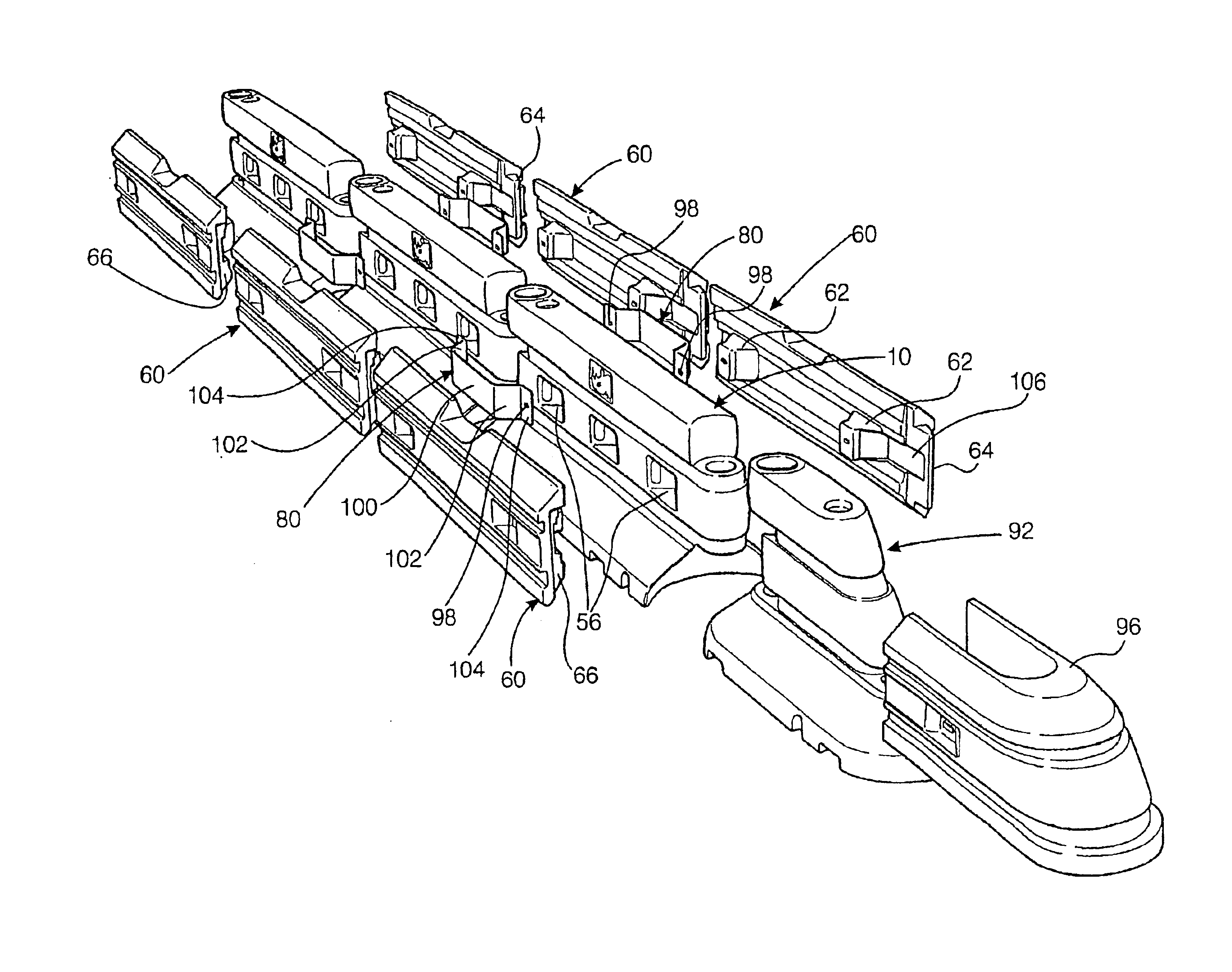Modular barrier
a module and barrier technology, applied in the field of modules, can solve problems such as gap tripping hazards, and achieve the effects of preventing the continued articulation of the barrier section, and increasing the resistance of the barrier to lateral impact forces
- Summary
- Abstract
- Description
- Claims
- Application Information
AI Technical Summary
Benefits of technology
Problems solved by technology
Method used
Image
Examples
Embodiment Construction
FIGS. 1 and 2 show a barrier section 10 that is formed by rotation moulding from high-density polyethylene. Because the barrier section is rotation moulded, it is hollow and can be filled with water when in use for traffic control. To that end it is provided with a filling port and a drain plug (not shown). The barrier section includes a comparatively wide base portion 12 surmounted by a comparatively narrow upright portion 14. The upright portion has a first projection 16 at a male end of the barrier section and a second projection 18 at the female end. As is more clearly shown in FIG. 3, when considered in conjunction with FIGS. 1 and 2, both projections have substantially semicylindrical outer surfaces. The first projection 16 is designed to fit into a correspondingly shaped first recess 20 that lies below the second projection 18 of a similar barrier section. The second projection 18 is designed to fit into a correspondingly shaped second recess 22 that lies above the first proj...
PUM
 Login to View More
Login to View More Abstract
Description
Claims
Application Information
 Login to View More
Login to View More - R&D
- Intellectual Property
- Life Sciences
- Materials
- Tech Scout
- Unparalleled Data Quality
- Higher Quality Content
- 60% Fewer Hallucinations
Browse by: Latest US Patents, China's latest patents, Technical Efficacy Thesaurus, Application Domain, Technology Topic, Popular Technical Reports.
© 2025 PatSnap. All rights reserved.Legal|Privacy policy|Modern Slavery Act Transparency Statement|Sitemap|About US| Contact US: help@patsnap.com



